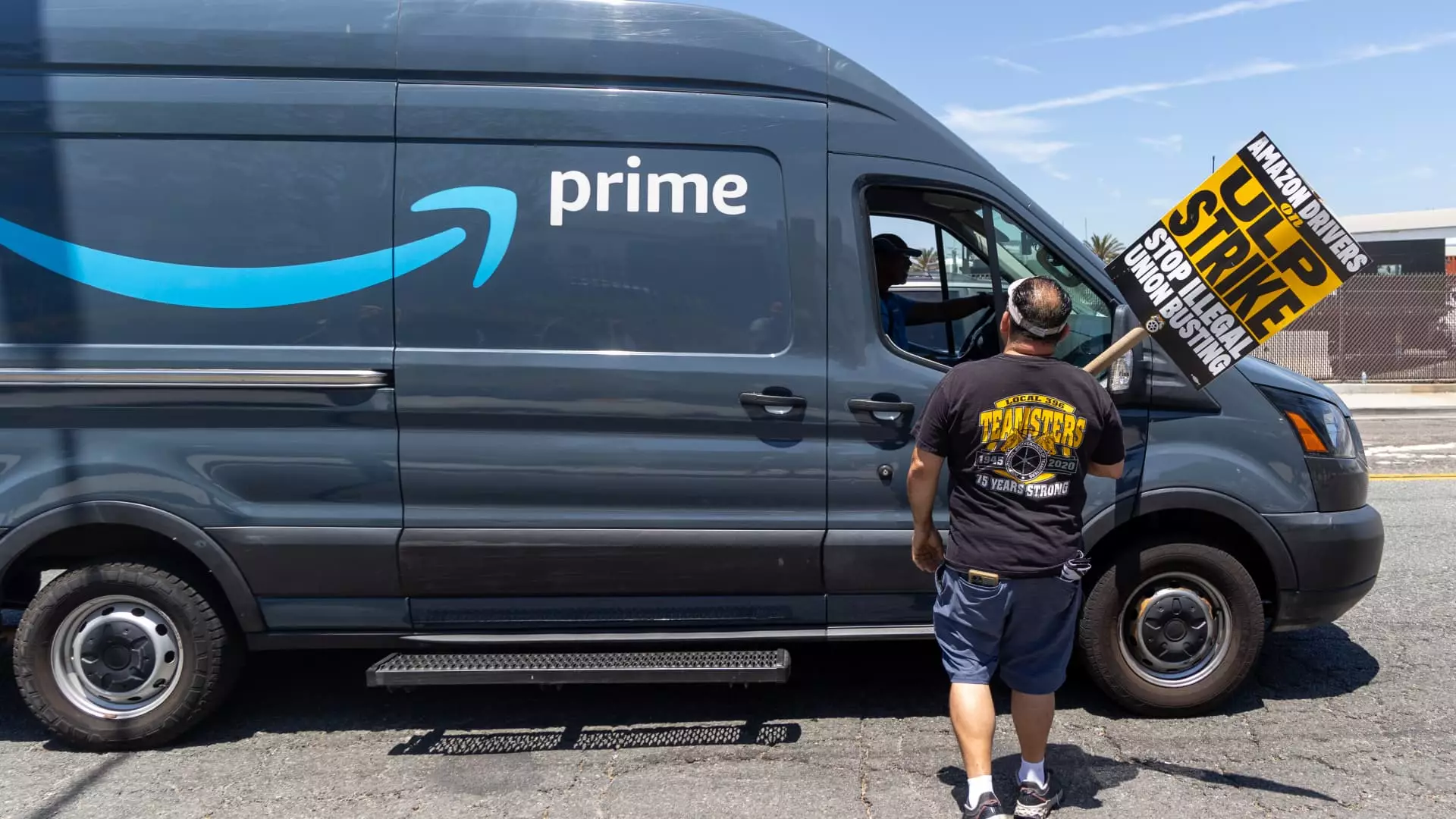The National Labor Relations Board (NLRB) regional director made a statement on Wednesday stating that Amazon should be considered a “joint employer” of some of its contracted delivery drivers in Atlanta. This announcement came after the NLRB reviewed two unfair labor practice charges filed in January regarding the treatment of drivers at the DAT6 warehouse in Atlanta. The regional director found that Amazon jointly employed drivers at the site who worked for a contractor called MJB Logistics.
While Amazon has historically hired third-party drivers to handle its increasing number of deliveries, the NLRB’s determination challenges the company’s stance on being a joint employer. Lawmakers and labor groups, such as the Teamsters union, have refuted Amazon’s claims, pointing out that drivers wear Amazon-branded uniforms, drive Amazon-branded vans, and have their schedules and performance expectations set by the company.
The NLRB’s determination that Amazon is a joint employer of some subcontracted drivers could have significant consequences for the company. It could compel Amazon to negotiate with employees who seek to unionize. This ruling is in line with a similar decision made by an NLRB official about subcontracted drivers at Amazon’s facility in Palmdale, California, highlighting a trend of increased scrutiny on Amazon’s labor practices.
The Teamsters union has been actively involved in organizing Amazon delivery and warehouse workers. The union established an Amazon division in 2021 to provide support and funding for workers in their organizing efforts. Over the past year, the Teamsters have led strikes at Amazon delivery facilities and successfully affiliated with a labor group at an Amazon warehouse on Staten Island.
In addition to the determination regarding joint employment, the NLRB also found merit to charges that Amazon threatened drivers in Atlanta with site closure if they unionized. The agency cited illegal coercive statements and implied surveillance at the facility. These allegations further underscore the contentious relationship between Amazon and its contracted drivers.
While the NLRB’s determinations in Atlanta and Palmdale are not final decisions, they set the stage for potential litigation. If the parties involved do not reach a settlement, a hearing will be scheduled with an NLRB judge. Both Amazon and the drivers have the right to appeal the judge’s decision to the NLRB board and could further escalate the case to federal court.
The NLRB’s ruling that Amazon should be considered a “joint employer” of some of its contracted delivery drivers marks a significant development in the ongoing labor disputes within the company. The implications of this determination could have far-reaching effects on Amazon’s labor practices and relationship with its workforce.

